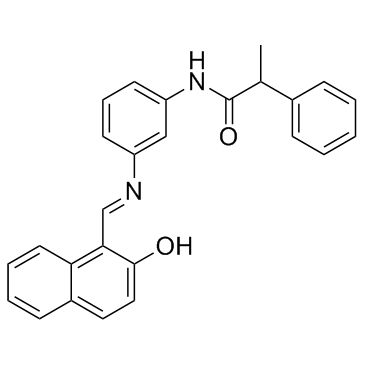Deacetylation of H4-K16Ac and heterochromatin assembly in senescence.
Kévin Contrepois, Jean-Yves Thuret, Régis Courbeyrette, François Fenaille, Carl Mann
文献索引:Epigenetics Chromatin 5 , 15, (2012)
全文:HTML全文
摘要
Cellular senescence is a stress response of mammalian cells leading to a durable arrest of cell proliferation that has been implicated in tumor suppression, wound healing, and aging. The proliferative arrest is mediated by transcriptional repression of genes essential for cell division by the retinoblastoma protein family. This repression is accompanied by varying degrees of heterochromatin assembly, but little is known regarding the molecular mechanisms involved.We found that both deacetylation of H4-K16Ac and expression of HMGA1/2 can contribute to DNA compaction during senescence. SIRT2, an NAD-dependent class III histone deacetylase, contributes to H4-K16Ac deacetylation and DNA compaction in human fibroblast cell lines that assemble striking senescence-associated heterochromatin foci (SAHFs). Decreased H4-K16Ac was observed in both replicative and oncogene-induced senescence of these cells. In contrast, this mechanism was inoperative in a fibroblast cell line that did not assemble extensive heterochromatin during senescence. Treatment of senescent cells with trichostatin A, a class I/II histone deacetylase inhibitor, also induced rapid and reversible decondensation of SAHFs. Inhibition of DNA compaction did not significantly affect the stability of the senescent state.Variable DNA compaction observed during senescence is explained in part by cell-type specific regulation of H4 deacetylation and HMGA1/2 expression. Deacetylation of H4-K16Ac during senescence may explain reported decreases in this mark during mammalian aging and in cancer cells.
相关化合物
| 结构式 | 名称/CAS号 | 分子式 | 全部文献 |
|---|---|---|---|
 |
Salermide
CAS:1105698-15-4 |
C26H22N2O2 |
|
Psammaplin A induces Sirtuin 1-dependent autophagic cell dea...
2015-02-01 [Biochim. Biophys. Acta 1850(2) , 401-10, (2015)] |
|
Antiasthmatic effects of resveratrol in ovalbumin-induced as...
2015-01-01 [Biol. Pharm. Bull. 38(4) , 507-13, (2015)] |
|
A small molecule Inauhzin inhibits SIRT1 activity and suppre...
2012-04-01 [EMBO Mol. Med. 4(4) , 298-312, (2012)] |
|
A novel sirtuin 2 (SIRT2) inhibitor with p53-dependent pro-a...
2014-02-21 [J. Biol. Chem. 289(8) , 5208-16, (2014)] |
|
Resveratrol reverses monocrotaline-induced pulmonary vascula...
2012-01-01 [Vascul. Pharmacol. 56(1-2) , 64-73, (2012)] |